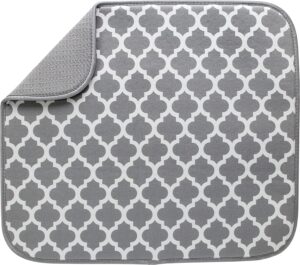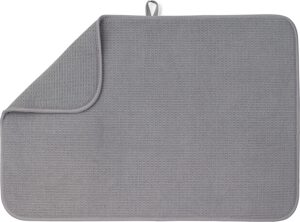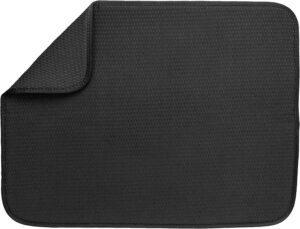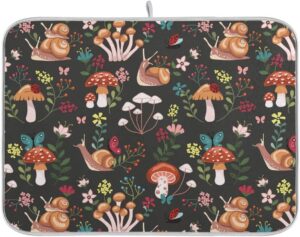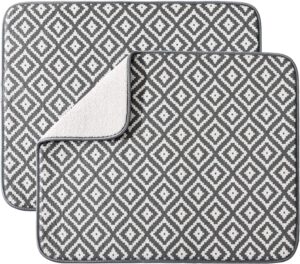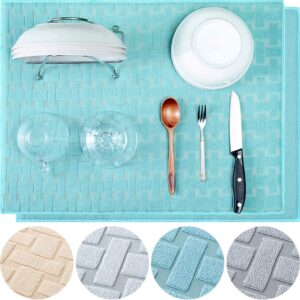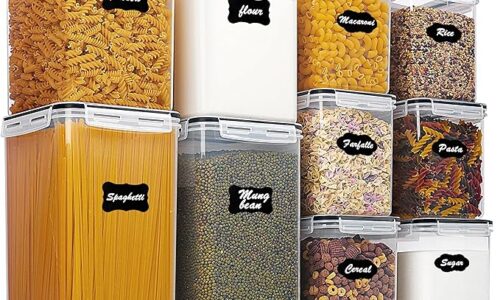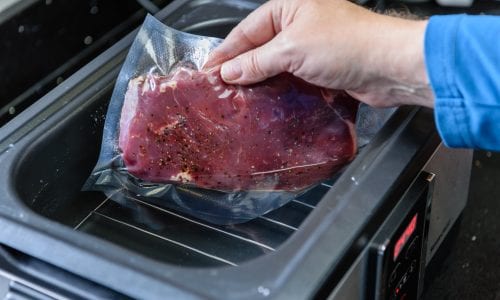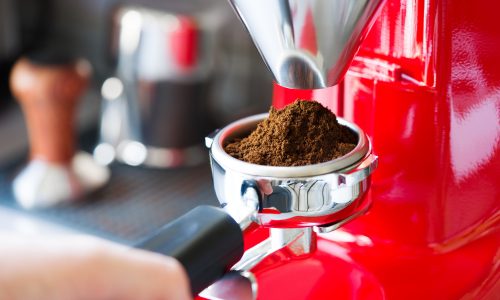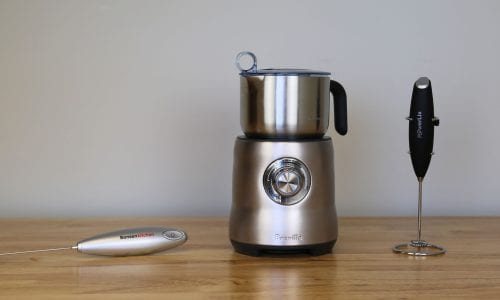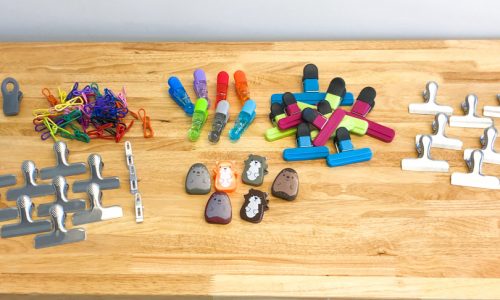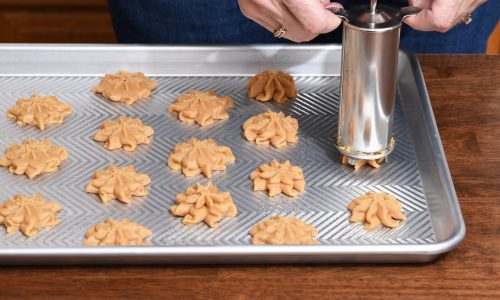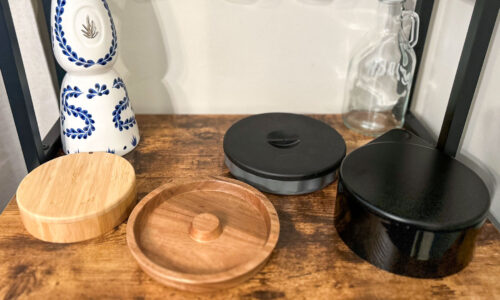The Best Dish Mat
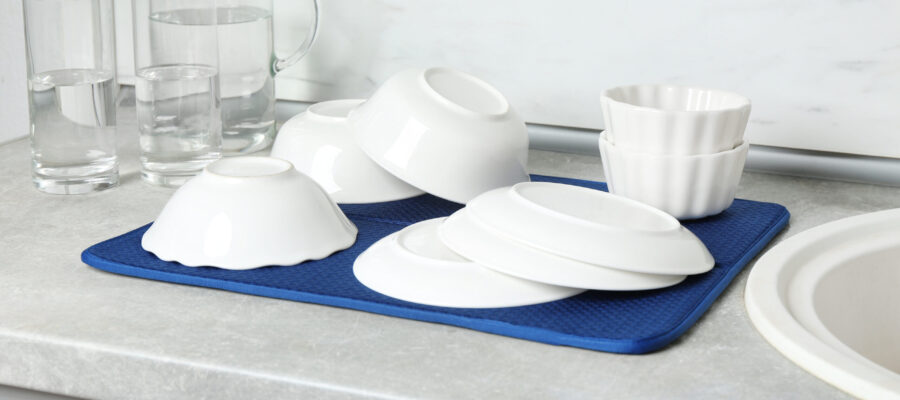
Our Review Process
Don't Waste Your Money is focused on helping you make the best purchasing decision. Our team of experts spends hundreds of hours analyzing, testing, and researching products so you don't have to. Learn more.
Our Picks For The Top Dish Mats
- 1. S&T INC. Reversible Machine Washable Microfiber Dish Mat
- 2. Bellemain 3-Ply Design Microfiber Dish Mat
- 3. MicoYang Heat-Resistant Silicone Dish Mat
- 4. Envision Home Foam Center Microfiber Dish Mat
- 5. ZLR Multipurpose Dishwasher Safe Silicone Dish Mat
- 6. Foiosoh Built-In Hanging Loop Polyester Dish Mat
- 7. AMOAMI Mildew-Resistant Silicone Dish Mat
- 8. SUBEKYU Quick Drying Machine Washable Dish Mats, 2-Pack
- 9. Gorilla Grip BPA-Free Silicone Dish Mat
- 10. KDIJET Slip-Resistant Back Microfiber Dish Mats, 2-Pack
Built to absorb up to four times its weight, this dish mat helps keep your countertops dry. It’s made from polyester with plenty of cushioning to protect your dishes. The pattern is reversible to let you switch things up as needed.
Multiple Colors and PatternsChoose from 20 different designs with this dish mat, which makes it easy to match with your existing décor.
This mat is larger and thicker than typical dish mats, measuring 24” x 17” and 0.25” thick. It features an innovative honeycomb microfiber design that can absorb extra moisture to keep your countertops dry. The flexible core makes it machine washable without impacting the quality of its cushioning.
Great for FamiliesMeasuring 24” x 17”, this dish mat has a surface area that’s almost 40 percent larger than other options to hold extra dishes.
Eco-friendly, food-grade silicone gives this mat a durable and versatile build. It’s heat resistant up to 450°F and is easy to clean with water and a brush. The soft material makes it flexible enough to be rolled or folded for easy storage.
Versatile UsesThis mat can tackle a variety of household chores, including drying dishes and keeping your pet’s food bowls from slipping.
Measuring 18” x 24” x 0.25”, this dish mat is both durable and effective. The design helps it absorb up to 4 times its weight, keeping your countertops dry. It’s both durable and machine washable to help keep it in good shape through many uses.
Durable Build Strong polyester with a foam filling makes this mat durable while also providing plenty of cushion.
Buying Guide
If you have a full load of dishes, running your dishwasher is typically more efficient and safer. But for smaller loads, handwashing often makes more sense. You’ll use less water for a few dishes, and you can set them out to air dry.
But if you routinely wash dishes by hand, you’ll need somewhere to set them to dry. Sure, you can set out a hand towel and rest everything on it, but the towel can quickly absorb any leftover water, leaving it a soggy mess. That also means the water might drift onto the countertop, potentially puddling and spreading to the rest of your countertop and even your floor.
A good dish mat is designed to absorb water, preventing it from making its way to the rest of your countertop. You can wash and rinse your dishes and even set them on the mat without drying them, although you might want to at least shake off some of the excess water.
Dish mats come in a variety of designs. You’ll find some that are flat microfiber that feels like cloth but packs plenty of padding to cushion your dishes. This is especially important if you plan to dry delicate items like wine glasses or fine china. Still others are made from silicone and designed in a way that captures water within a rim. Both are equally efficient at drying dishes while also keeping your countertop dry.
One downside to dish mats is that residue can start to build up over time. Many microfiber dish mats can be tossed in the washer for easy cleanup, although you’ll likely want to lay them flat to dry. Silicone mats will need to be hand washed, but often simply rinsing them with warm water will do. You might need a scrub brush to clear away built-up stains.
What to Look For
- Bacteria can spread from one dish to another. If you’re handwashing dishes, it’s best to avoid using the same washcloth and sponge to clean your entire load of plates, drinkware and silverware, and using the same towel to dry multiple items can also be dangerous.
- Dish mats come in a variety of colors and patterns. You should be able to find an option that matches your kitchen décor.
- Some dish mats can roll up or fold for under-cabinet storage when you aren’t using them. This can help you keep your countertops clear.
- A reversible dish mat can give you two different designs that you switch up based on your mood.
- Pay attention to the dimensions of your dish mat. They come in a variety of sizes. If you have a large family or you handwash all your dishes, you might want to go with a larger option.
- Thickness can also vary from one dish mat to another. A thicker mat has the benefit of providing plenty of cushioning for more delicate dishes.
- If you’re concerned about chemicals or the environment, look for a dish mat built sustainably with food-grade materials.
- Dish mats aren’t just for drying dishes. Some can be used for household tasks like providing an anti-slip surface for your pet’s food bowls and giving a little extra cushioning to items in your cabinets.
- To prevent mold in your cabinets, always try to let your dishes dry thoroughly before putting them away. Try to avoid towel-drying them since bacteria can spread from one surface to another through a towel.
- Try to avoid storing your dishes on top of each other on your dish mat. If the water is trapped between surfaces, it could promote bacterial growth.
- Dish mats can begin to harbor bacteria over time, too. For best results, make sure you clean and thoroughly dry your dish mat between uses. Letting it sit for days without drying it can also lead to bacterial growth.
More to Explore
The first dishwasher wasn’t invented until 1886, so handwashing was the norm throughout most of history. It started with the discovery of soap for hygiene around 5,000 years ago. Those early soaps were made from a combination of soap and ash. That soap was absorbed by sea sponges to wash surfaces. Although there’s no evidence this method was used to wash dishes, this practice led to the detergents and soaps we use today.
In the Middle Ages, hygiene became an issue as epidemics highlighted its importance. In the 1300s, metal cauldrons became popular for cooking, but they also came in handy for heating water. That water was used for both bathing and washing dishes. Soon, the three-legged cauldron became a fixture in many home kitchens.

